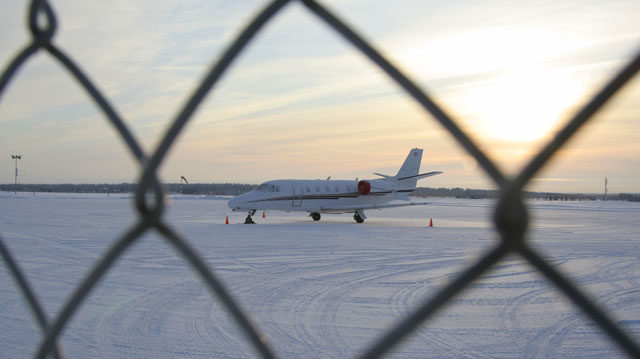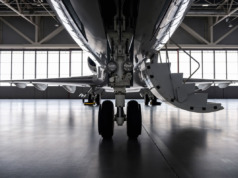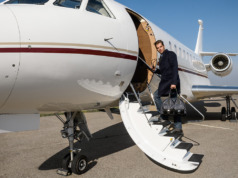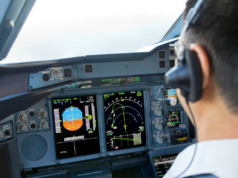
In today’s business aviation landscape, a robust security plan is no longer a nice-to-have; it’s a must-have. The safety and protection of people, property, and assets from rising security risks are simply non-negotiable. Recent events in the Middle East, Europe, the U.S., and other locations around the world emphasize the existing threats for those traveling. While criminal attacks, terror incidents, or other unforeseen disasters can occur anywhere and at any time, you can lower your risk by assuming more responsibility for your own security and protection.
Often, the most challenging obstacle to overcome is an attitude of complacency.
The best and most comprehensive security plan is a team effort that involves and requires ownership from all members of the aviation team. Owners, pilots, crew members, and passengers alike must be part of the process and prepared to acknowledge both the existence of potential threats and the control each has over mitigating them.
The process must be well planned, multi-layered, consistent, understandable, and regularly tested, probed, and updated. And while each security plan is uniquely customized to address your specific likelihood and consequence factors, all must contain these components:
1 Comprehensive Threat Assessment: This is the only true way to understand vulnerability gaps and security deficiencies. A weak link can exist anywhere and because threats are constantly evolving, today’s weak link may not have existed yesterday. Most often best conducted by an independent consultant with risk assessment experience, the threat assessment delivers a fresh perspective on vulnerabilities that may be invisible to you or your team simply because of the regularity with which you experience a given circumstance. Any threat assessment should be far-reaching and address many areas, including personnel, boarding procedures, maintenance, deliveries, the hangar facility itself, and locations to which you travel frequently.
2 Background Checks: Every level of personnel operating in your daily environment – from facility workers to pilots to maintenance personnel – should be properly screened to include a thorough background investigation, drug screening, and social media screening. Insight into an individual’s social media has become critical to the process, most often revealing his or her truest image.
3 Due Diligence: Security preparedness begins well in advance of departure. Be aware of the early building blocks of a security plan which, when constructed correctly, will support your entire security initiative. The best plans consider and outline methods of conflict avoidance. While your destination will be a driving force, pay attention to these key areas:
- The flight crew should be familiar with the passengers.
- All baggage should be properly screened and accounted for.
- The destination should be known and vetted well in advance of departure – including weather forecasts, local culture and activities, potential or ongoing civil unrest or discord, reputation for criminal activity, and local police.
4 Destination Preparedness: Once you and your crew arrive at your destination:
- Ensure that travel from the arrival point to local destination is pre-arranged. Avoid unregulated taxis and use only those taxis or shuttles that have been summoned via phone or dispatch.
- Carry cash separately from credit cards. Watch for pickpocketing scams and thefts of backpacks or purses.
- Always be aware of your surroundings and, if possible, travel in groups of three or more.
- If staying at a hotel, be aware of the information that may be unknowingly disclosed at the front desk, in the room, and common areas. Make sure the hotel is close by and has a solid reputation for safety. Never advertise arrival and departure times and, if possible, vary routes to and from the airport.
Because business aviation security is subject to far less regulation than commercial aviation, employing an active and robust security program to measure and protect facilities, personnel, aircraft, and clients falls predominantly to you, the owner/operator and safety leader. BAA
Michael Schulstad is the Managing Director Investigations, Greystone Intelligence. He formerly served with the FBI.
Justin Kelley is Vice President of Operations for MSA Security. He was Commander of the Connecticut State Police Bomb Squad.




